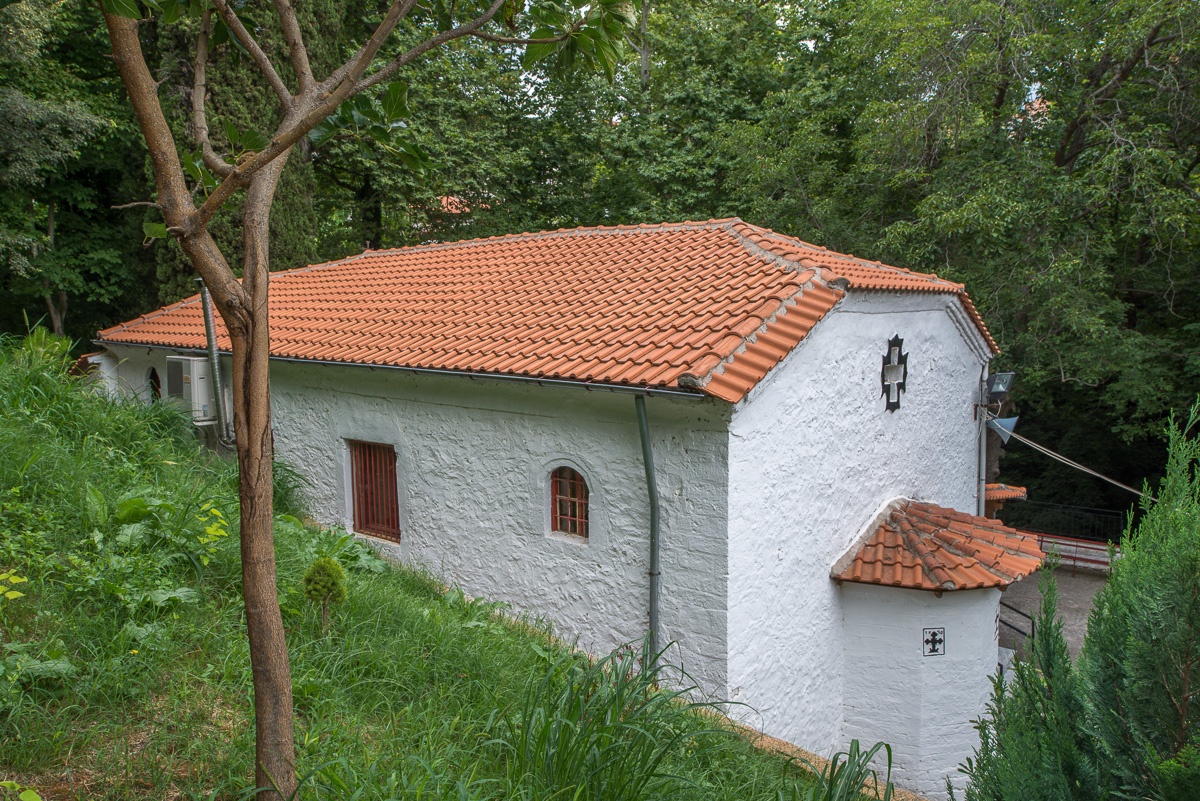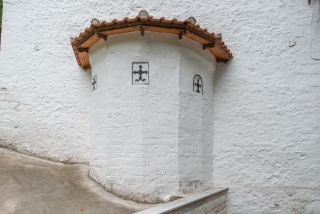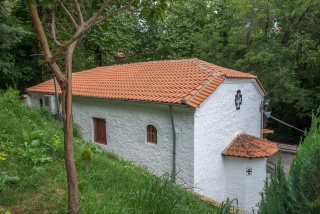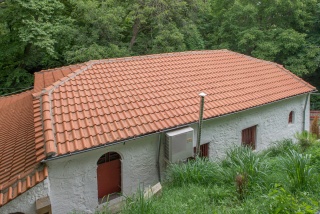Traveler's Guide
East Macedonia & Thrace
Holy Church of Saint Paraskevi

Location: Kallithea. In the stream that passes south of the village there is the church of Saint Paraskevi. The tradition says that Marco Gikas dreamed many times of the Holy, asking him repeatedly to build a church to house her image. Mark Gikas found by digging the holy water thus confirming his dreams for the choice of location. When the residents of village saw the discovery of the holy water, they also began to participate and help in the construction. For reasons of expediency, the Sublime Porte contributed to the creation of the Exarchate and so separation of the Orthodox faith in Exarchist and patriarchal came. The accession of the Christian patriarchal Mark Gikas in exarchy in the Ottoman period meant the repudiation of Hellenism and the accession in Bulgarianism. The residents of the village were divided into Exarchist and patriarchal and Saint Paraskevi was a church of exarchist. Saint Paraskevi is built with stone, brick and mud and her walls are 1 meter thick. The rate of the temple is one-room basilica without dome, women"s loft and loggia. In the left part of the temple there is a wooden pulpit which is no longer accessible as part of the steps has been removed in order to put the pews. Next to the entry there is a melting pot for the dropping of the Holy waters of the sacrament of Baptism, used until today. The works on the building began in 1886 and ended in 1891. At the icon screen, which is woden carved, we distinguish the Crucified and the dove, which symbolizes the Holy Spirit, which was used to going up and down with a mechanism, shaking its wings to ignite the lamp, and the spear, the hammer and the pincer symbols of the sacrifice on the cross of Jesus. In the central part of the temple there are preserved images that date back to the period of the construction of the Temple (1891), with donations from the residents of Kallithea and the surrounding villages. The age and style of the pictures have fascinated many researchers from different parts of the world. The bottom is adorned with images of Genesis with Adam and Eve. Like in most churches of the prewar Greece, it was built two meters lower so as to be shelter for the civilian population in times of crisis and make the bullets pass above them. In the past, there was a building next to the church, which was used as a hostel for pilgrims. This building was built by residents of the village because like in every remote village pilgrims came from far away and should accommodate. On the upper floor there were rooms and below there were stables for animals that carried them. Later there was a need for expansion of the church and a vastibule was added to the original structure, built with stone, brick and glass. Also the roof inside the church was repaired and the stone floor was replaced with marble. The interior decoration was enriched with hagiographies in 2010.
Management Body: Holy Metropolis of Drama
Tel. +302521032362
Address
No information available.Contact Information
+302521066098












